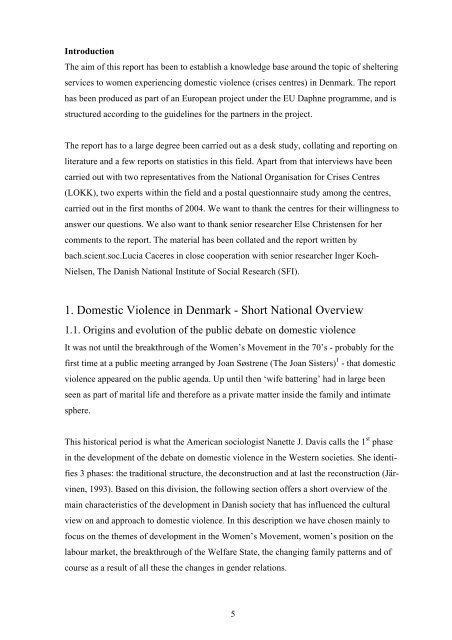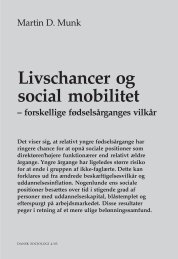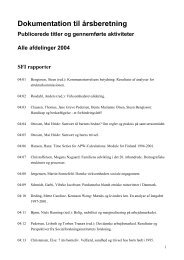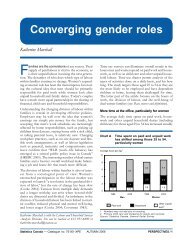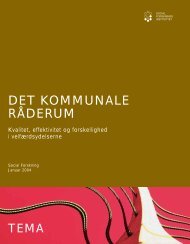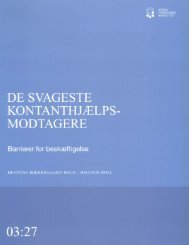Shelters in Denmark For Battered Women - European Commission
Shelters in Denmark For Battered Women - European Commission
Shelters in Denmark For Battered Women - European Commission
Create successful ePaper yourself
Turn your PDF publications into a flip-book with our unique Google optimized e-Paper software.
Introduction<br />
The aim of this report has been to establish a knowledge base around the topic of shelter<strong>in</strong>g<br />
services to women experienc<strong>in</strong>g domestic violence (crises centres) <strong>in</strong> <strong>Denmark</strong>. The report<br />
has been produced as part of an <strong>European</strong> project under the EU Daphne programme, and is<br />
structured accord<strong>in</strong>g to the guidel<strong>in</strong>es for the partners <strong>in</strong> the project.<br />
The report has to a large degree been carried out as a desk study, collat<strong>in</strong>g and report<strong>in</strong>g on<br />
literature and a few reports on statistics <strong>in</strong> this field. Apart from that <strong>in</strong>terviews have been<br />
carried out with two representatives from the National Organisation for Crises Centres<br />
(LOKK), two experts with<strong>in</strong> the field and a postal questionnaire study among the centres,<br />
carried out <strong>in</strong> the first months of 2004. We want to thank the centres for their will<strong>in</strong>gness to<br />
answer our questions. We also want to thank senior researcher Else Christensen for her<br />
comments to the report. The material has been collated and the report written by<br />
bach.scient.soc.Lucia Caceres <strong>in</strong> close cooperation with senior researcher Inger Koch-<br />
Nielsen, The Danish National Institute of Social Research (SFI).<br />
1. Domestic Violence <strong>in</strong> <strong>Denmark</strong> - Short National Overview<br />
1.1. Orig<strong>in</strong>s and evolution of the public debate on domestic violence<br />
It was not until the breakthrough of the <strong>Women</strong>’s Movement <strong>in</strong> the 70’s - probably for the<br />
first time at a public meet<strong>in</strong>g arranged by Joan Søstrene (The Joan Sisters) 1 - that domestic<br />
violence appeared on the public agenda. Up until then ‘wife batter<strong>in</strong>g’ had <strong>in</strong> large been<br />
seen as part of marital life and therefore as a private matter <strong>in</strong>side the family and <strong>in</strong>timate<br />
sphere.<br />
This historical period is what the American sociologist Nanette J. Davis calls the 1 st phase<br />
<strong>in</strong> the development of the debate on domestic violence <strong>in</strong> the Western societies. She identifies<br />
3 phases: the traditional structure, the deconstruction and at last the reconstruction (Järv<strong>in</strong>en,<br />
1993). Based on this division, the follow<strong>in</strong>g section offers a short overview of the<br />
ma<strong>in</strong> characteristics of the development <strong>in</strong> Danish society that has <strong>in</strong>fluenced the cultural<br />
view on and approach to domestic violence. In this description we have chosen ma<strong>in</strong>ly to<br />
focus on the themes of development <strong>in</strong> the <strong>Women</strong>’s Movement, women’s position on the<br />
labour market, the breakthrough of the Welfare State, the chang<strong>in</strong>g family patterns and of<br />
course as a result of all these the changes <strong>in</strong> gender relations.<br />
5


